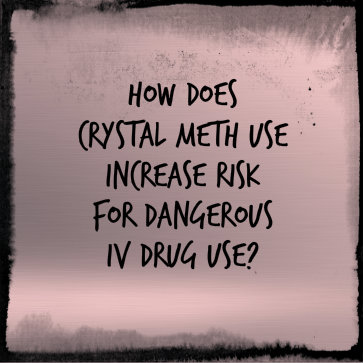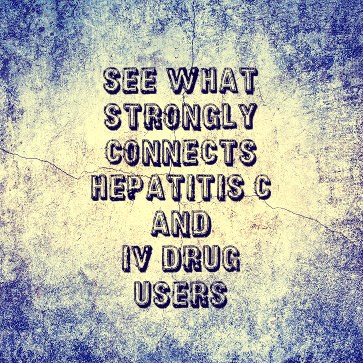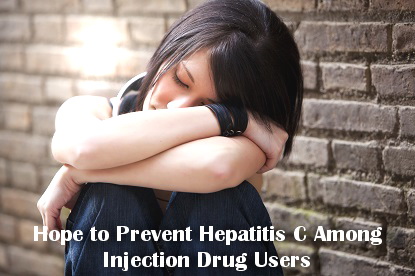Opioid maintenance therapy is the term used to describe the ongoing use of an opioid-based medication as a treatment for people recovering from uncontrolled opioid addiction. While doctors often use a medication called methadone in this form of therapy, they can also use a generally safer medication called buprenorphine.
In a study published in October 2014 in the American Medical Association journal JAMA Internal Medicine, a team of American researchers assessed the potential role of opioid maintenance therapy in preventing the spread of hepatitis C infections among people who use injection drugs.
Opioid Maintenance Therapy
Opioid-based medications are commonly used to help people who enter treatment for an addiction to heroin, prescription opioids or other opioid substances. These medications are useful in two treatment contexts: opioid detoxification and opioid maintenance. During opioid detoxification, doctors temporarily use opioid-based medications to help people in treatment avoid the potentially severe, relapse-promoting effects of opioid withdrawal.
 During opioid maintenance, doctors use controlled doses of an opioid-based medication as a longer-term, safer alternative to the uncontrolled substance intake that characterizes opioid addiction. Some people receive opioid maintenance therapy for a few months, while others receive the therapy on an ongoing basis.
During opioid maintenance, doctors use controlled doses of an opioid-based medication as a longer-term, safer alternative to the uncontrolled substance intake that characterizes opioid addiction. Some people receive opioid maintenance therapy for a few months, while others receive the therapy on an ongoing basis.
The medication most associated with opioid maintenance therapy is methadone, a fairly powerful opioid substance only available in the U.S. in certain facilities licensed and monitored by the federal government. However, many programs now use buprenorphine, a weaker opioid substance legal for use in a much wider range of treatment settings.
Generally speaking, buprenorphine does not come with the same potential for abuse as methadone. In addition, while people who abuse methadone can easily experience an opioid overdose, buprenorphine overdoses are relatively rare. Also, people who abuse buprenorphine have much lower chances of developing medication dependence.
Hepatitis C
Hepatitis C is the name for a viral infection that produces significant and potentially dangerous inflammation inside the liver. The same name also applies to the virus (also known as HCV) responsible for causing this form of infection. Like all viral infections, hepatitis C is contagious. In America, people who use injection drugs are the most likely population group to experience exposure to HCV. Typically, such exposure occurs during the unsanitary use of needles and syringes or other types of paraphernalia associated with injecting drugs or medications into a vein, into a muscle or under the skin. Some people develop a limited form of hepatitis C known as acute hepatitis C.
However, others develop a much more serious, ongoing form of the infection known as chronic hepatitis C. People with the chronic form of the disease can experience severe or potentially fatal health issues that include permanent liver tissue scarring (i.e., liver cirrhosis) and certain types of malignant liver cancer. Unfortunately, most initially acute cases of hepatitis C turn chronic over time.
Can Opioid Maintenance Help Prevent Hepatitis C?
In the study published in JAMA Internal Medicine, researchers from Boston University, Boston Medical Center, the University of New Mexico and UC San Francisco used data gathered from a 13-year project to help determine if injection drug users who receive opioid maintenance therapy have a lowered chance of getting infected with the hepatitis C virus.
This project included 552 young adult users who were under the age of 30 and free from hepatitis C when their participation began. Some of these participants received opioid maintenance therapy as their primary form of treatment. Others received opioid detoxification or forms of drug treatment that did not involve opioid medications. In addition, some participants did not receive any drug treatment.
Over the course of the study period, 171 of the participants were infected with HCV. After analyzing the breakdown of affected individuals, the researchers concluded that the participants who received opioid maintenance therapy had a significantly smaller chance of getting hepatitis C than the participants who went through opioid detoxification or received a form of treatment not based on the use of an opioid medication.
The study’s authors concluded that members of the opioid maintenance therapy group had a lower rate of HCV infection because they had a lower rate of exposure to the risk factors that make such an infection more likely to occur. They believe that the use of opioid maintenance therapy may substantially limit the transmission of hepatitis C among young people who consume injection drugs.
Learn More About The Different Types of Addiction Treatment
30 Dec 2013
The History And Nasty Effects Of Krokodil
Would you swallow paint thinner or iodine? Would you inject yourself with lighter fluid or gasoline? Of course not. But desperate addicts living in impoverished areas of the world have turned to a drug that is made up of these kinds of toxic ingredients. The drug is known as Krokodil and it is a deadly substance.
The History Of Krokodil
Krokodil first appeared in the early 20th Century when it held a Swiss patent and was sold under the name Permonid. It is a derivative of morphine, but is 8-10 times stronger than morphine. Because of this, the drug also has a long history of non-medical use.
 More recently, the drug resurfaced in poor areas of Russia around 2002 where it was seen as a cheap substitute for heroin. Krokodil is a concoction of codeine and any number of harsh chemicals which might be found around the house or in the garage. It has been cheap to make because until not long ago codeine was sold over-the-counter in Russia.
More recently, the drug resurfaced in poor areas of Russia around 2002 where it was seen as a cheap substitute for heroin. Krokodil is a concoction of codeine and any number of harsh chemicals which might be found around the house or in the garage. It has been cheap to make because until not long ago codeine was sold over-the-counter in Russia.
From 2002-2010 use of Krokodil spread across Russia, dragging what is guessed to be several million addicts in its wake. Exact figures on the numbers of users are hard to come by since the drug is essentially a form of suicide. Many users die within two years of starting to inject Krokodil. Why would people take such a scary drug? Because it is three times cheaper than heroin and 10 times stronger than codeine.
Krokodil did not remain in Russia. It is believed to have spread across Europe, taking hold in poor, mostly rural regions. It is now thought that Krokodil has crossed the ocean to Central or perhaps North America. There was a highly publicized report of a young girl who showed up in a hospital in Mexico City with what doctors thought to be a severe STD. Instead, it turned out that the girl had been injecting Krokodil into her genital area for a period of months.
Nasty Effects Of Krokodil On The Body
Krokodil is gruesome in that the drug destroys the user’s body from within. The drug causes blood vessels to break open and nearby tissue to die. Like the corrosive agents used to make the drug, lesions eat away a person’s flesh right down to the bone. It is called Krokodil because at the site where the person injects themselves with the drug the skin takes on a toughened, scale-like appearance. It gets a foothold among groups where heroin is too expensive. In the U.S. evidence shows a similar trend with many turning away from expensive prescription drugs in favor of far less costly street heroin.
Krokodil In The U.S.?
There have been unsubstantiated reports of Krokodil’s presence here in the United States, but so far no reports have been verified. Bringing a sample into a reputable lab is all that would be needed to determine that the drug has indeed come to America. Experts suggest that there is really no reason for Krokodil to find a home in this country.
Drug enforcement agents, addiction specialists and others say that the fact that Americans can afford less immediately lethal street drugs is reason enough to forego Krokodil. Though Krokodil, like methamphetamine, is a drug made as a home-brew, it is still hard to find, so why would drug users go looking for it? Lastly, Krokodil’s high is dependent on codeine – a substance that is far more controlled in this country than in other parts of the world.
So while the drug has definitely been traveling around the globe in recent years, it does not appear to have landed here as of yet. Still, the hopelessness that would drive a person to use such a frighteningly destructive drug is enough to warrant concern here at home and around the world.
Read More About Reported Cases Of Krokodil Use In The U.S.
Crystal methamphetamine (crystal meth) is an illegal, illicitly produced form of methamphetamine, a tightly controlled stimulant drug with limited but real usefulness as a legitimate medication. People who use/abuse this illegal product run significant risks for developing a range of serious or potentially deadly health complications. According to the results of a study published in October 2013 in the Canadian Medical Association Journal, teenagers and young adults who use crystal meth substantially increase their chances of getting involved in IV (intravenous) drug use, a form of drug use strongly associated with severe substance-related health problems.
How Methamphetamine And Crystal Meth Effects The Body
 Methamphetamine is a close chemical relative of amphetamine; like that well-known stimulant medication, it produces euphoric sensations and sharply boosts the baseline activity rate inside the brain. Over time, the brain can get accustomed to methamphetamine’s effects and develop a dependence on the drug’s presence. In turn, dependence on methamphetamine is often a precursor for methamphetamine addiction, a highly disruptive and destructive combination of dependence, drug cravings and drug-oriented lifestyle patterns. Doctors occasionally prescribe legal, pharmaceutically manufactured methamphetamine to treat cases of narcolepsy, severe obesity or attention-deficit/hyperactivity disorder (ADHD).
Methamphetamine is a close chemical relative of amphetamine; like that well-known stimulant medication, it produces euphoric sensations and sharply boosts the baseline activity rate inside the brain. Over time, the brain can get accustomed to methamphetamine’s effects and develop a dependence on the drug’s presence. In turn, dependence on methamphetamine is often a precursor for methamphetamine addiction, a highly disruptive and destructive combination of dependence, drug cravings and drug-oriented lifestyle patterns. Doctors occasionally prescribe legal, pharmaceutically manufactured methamphetamine to treat cases of narcolepsy, severe obesity or attention-deficit/hyperactivity disorder (ADHD).
Crystal meth gets its name from its characteristic crystalline appearance. In America, most of the available supply of this drug comes from illegal, large-scale manufacturing facilities located on U.S. territory or in other countries. Some crystal meth also comes from small-scale operations that only service local areas. Depending on the process used during its creation, illegally made methamphetamine can contain a number of highly dangerous compounds, including sulfuric acid, acetone, hydrochloric acid or red phosphorus. Since use of crystal meth inevitably takes place outside of a legitimate medical context, it inherently constitutes a form of drug abuse. People who habitually use the drug have exceedingly high risks for developing an addiction or other major health problems such as drug overdoses, disturbed or violent mood shifts, extreme tooth and gum damage (meth mouth) and psychosis (hallucinations and/or delusional thought processes).
IV Drug Use
IV drug use is the common term for the purposeful injection of drugs directly into the bloodstream. As a rule, doctors and other medical professionals use this term in reference to the injection of recreational substances rather than medications. IV drug abusers commonly rely on direct bloodstream access to rapidly deliver substances to their brains, and thereby rapidly trigger the effects associated with those substances. IV drug injection carries risks above and beyond the risks classically associated with recreational drug use in general.
IV Drug Use Risks
- Increased chances of drug overdose
- Dangerous or lethal infections such as hiv/aids or hepatitis b or c
- Lethal infection-related complications such as bacteremia or sepsis
- Increased chances of developing pneumonia
- And increased chances of dangerous contaminants or additives
How Crystal Meth Use Increases Chance Of Falling Into IV Drug Use
In the study published in the Canadian Medical Association Journal, researchers from several Canadian institutions used information gathered from a project called the At-Risk Youth Study to examine the potential connection between crystal meth use and the initiation of IV drug use among teenagers and young adults between the ages of 14 and 26. All told, 991 individuals submitted answers to questionnaires regarding their baseline drug-using behaviors. At the beginning of the study, 395 of these individuals were crystal methamphetamine users, while another 390 were IV drug users. The researchers tracked the drug use patterns of all 991 participants over five years in order to uncover any developing trends.
Altogether, 16 percent of the participants not initially involved in IV drug use began taking drugs intravenously over the course of the study. After analyzing their data, the researchers found that the recent use of a non-injectable form of crystal methamphetamine is clearly linked to increased chances of beginning IV drug use. In most cases, prior users of non-injectable crystal meth choose this drug for their first forays into intravenous use. The researchers also found that the average young user of crystal meth who initiates IV drug intake makes the transition to intravenous use at the exceptionally early age of 14.
Meth Treatment Significantly Needed In City, Street Culture
The authors of the study published in the Canadian Medical Association Journal gathered their data from young people either living on the street or heavily involved in local street culture. They believe that their findings indicate an urgent need to address crystal methamphetamine use in this population and curb the transition to IV drug use.
Read More About The Connection Between Hepatitis C And IV Drug Users And Get Help Today!
Hepatitis C is a form of serious, liver-damaging illness triggered by infection with a virus commonly known as the hepatitis C virus (HCV). Current evidence indicates that, throughout the U.S. and the rest of the world, the majority of new cases of this illness stem from the unsanitary injection of IV drugs (intravenous drugs). In a study published in June 2013 in the Harm Reduction Journal, a multi-institution research team reviewed some of the potentially overlooked factors that contribute to the ongoing connection between IV drug use and HCV infection. The researchers concluded that patient-doctor miscommunication and lack of access to required resources have a considerable impact on the reinforcement of this connection.
How Is Hepatitis C Spread?
 Hepatitis C is one of four viral diseases that get their names because they damage function inside the human liver. It is a blood-borne illness that typically occurs when an individual with HCV knowingly or unknowingly exposes others to his or her infected blood. Common routes for this exposure include intentional or accidental needle sticks or injections, as well as the accidental entry of infected blood through a cut or through the mouth. Additional, less common potential routes of exposure include mother-to-child transmission inside the womb, organ transplant procedures, kidney dialysis procedures and blood transfusions.
Hepatitis C is one of four viral diseases that get their names because they damage function inside the human liver. It is a blood-borne illness that typically occurs when an individual with HCV knowingly or unknowingly exposes others to his or her infected blood. Common routes for this exposure include intentional or accidental needle sticks or injections, as well as the accidental entry of infected blood through a cut or through the mouth. Additional, less common potential routes of exposure include mother-to-child transmission inside the womb, organ transplant procedures, kidney dialysis procedures and blood transfusions.
Hepatitis C Symptoms
The hepatitis C virus can produce either acute (short-term) infections or chronic (long-term) infections. In both cases, affected individuals often have few or no early symptoms of the changes going on inside their livers. If early symptoms do occur, they are as follows.
Early Hepatitis C Symptoms
- Jaundice
- Loss of energy
- Spikes in body temperature (i.e., fevers)
- Swelling in the abdomen
- Abdominal pain in the liver region
- Nausea and vomiting
- Declining appetite
Eventually, people affected by chronic hepatitis C can develop serious or potentially fatal cases of cirrhosis (liver scarring) or liver cancer. Roughly 75 percent to 85 percent of people who contract hepatitis C develop the chronic form of the illness.
IV Drug Use And Risky Behaviors
IV drug users have an uncommonly high rate for hepatitis C (and a number of other serious, infectious diseases) for several reasons. First, the introduction of a hypodermic needle into a vein provides direct access to a person’s bloodstream. In combination with poor needle-related hygiene, this method of drug use provides the hepatitis C virus with a very easy avenue for entry into the human body. The most common unhygienic practice associated with transmission of the virus is the sharing of dirty needles among two or more drug users. In addition, people who take drugs intravenously often establish other patterns of behavior that can further increase their risks for HCV exposure. Examples of these harmful behavioral patterns include having unprotected intercourse with intimates and engaging in sex-for-drugs exchanges with others.
Factors For The Connection Between Hepatitis C Infections And IV Drug Use
In the study published in the Harm Reduction Journal, researchers from seven U.S. institutions looked at some of the lesser-known factors that can account for the strong, enduring connection between IV drug use and hepatitis C infections. Rather than take a large-scale approach, they focused on 14 groups of IV drug users in the San Francisco area and the New York City area. Altogether, these groups contained 95 individuals. Each of the participating individuals took part in a series of discussions designed to identify specific hindrances to the adequate prevention or treatment of HCV in IV drug-using populations.
After reviewing and analyzing the results of the participants’ discussions, the researchers identified several potential barriers to the receipt of adequate services or the accurate transmission of HCV-related information from doctors and other health care professionals to people who use IV drugs. These barriers include lack of a full understanding among IV drug users about the significance of an HCV diagnosis, lack of drug user knowledge regarding the symptoms and potential consequences of hepatitis C, a poor drug user understanding of the need to monitor the course of a hepatitis C infection, lack of facilities where intravenous drug users can actively seek out HCV testing, and lack of a broad range of options for the treatment of diagnosed cases of hepatitis C.
Health Care Professional’s Role In HCV/ Hepatitis C Treatment
In light of their findings, the authors of the study published in the Harm Reduction Journal concluded that health care professionals must increase their efforts to relay accurate, sufficiently detailed information about HCV and hepatitis C. They also concluded that these improved educational efforts must take place both in drug treatment centers and in facilities that perform disease screenings.
Read More About IV Drug Users And Other Dangerous Risks
20 Nov 2013
Flesh-Eating Krokodil Claims U.S. Victims?
Desomorphine, also known by the Russian nickname Krokodil or the English language equivalent Crocodile, is a synthetic substance based on the opioid narcotic drug morphine. This drug, outlawed in America, has much stronger chemical effects than morphine and produces severe side effects in long-term users that can include tissue destruction, limb loss or death. Desomorphine users commonly take a homemade form of the drug that contains one or more additional toxic substances. Until recently, desomorphine abuse was not known to affect any segment of the U.S. population. However, in September 2013, the country’s first identified cases of this abuse allegedly occurred in Phoenix, Arizona.
Desomorphine Basics
 Morphine is an opioid substance taken directly from the sap of a plant called Papaver somniferum (commonly referred to as the opium poppy). Like all other natural and synthetic opioids, it achieves powerful, potentially addicting drug effects by accessing key portions of the brain and creating intense spikes in pleasure levels, as well as a reduced ability to feel pain. Desomorphine was invented in a laboratory setting in the 1930s by changing morphine molecules’ natural chemical structure. Compared to morphine, it produces roughly 10 times the level of effect at any given dose. This drug effect comes on rapidly and also fades away in a relatively short amount of time.
Morphine is an opioid substance taken directly from the sap of a plant called Papaver somniferum (commonly referred to as the opium poppy). Like all other natural and synthetic opioids, it achieves powerful, potentially addicting drug effects by accessing key portions of the brain and creating intense spikes in pleasure levels, as well as a reduced ability to feel pain. Desomorphine was invented in a laboratory setting in the 1930s by changing morphine molecules’ natural chemical structure. Compared to morphine, it produces roughly 10 times the level of effect at any given dose. This drug effect comes on rapidly and also fades away in a relatively short amount of time.
Even in its most chemically pure form, desomorphine is capable of producing significant damage when used repeatedly over time. The most common side effect of chronic use—a form of blood vessel and soft tissue damage that results in green, scaly skin—gives the drug its nickname, Krokodil (Crocodile). If left untreated, desomorphine-related vessel and tissue damage can ultimately result in tissue death (gangrene) or a clot- and inflammation-based ailment called thrombophlebitis. People with these conditions can lose their affected limbs to amputation or even die. Doctors can potentially combat the active drug effects of desomorphine with the anti-narcotic medication naloxone or other treatments used to address heroin addiction. However, there is no specific, fully developed treatment for the drug. In addition to dealing with the brain effects of desomorphine addiction, doctors commonly need to address the severe physical injuries associated with the drug’s use.
Desomorphine Abuse
Today, desomorphine abuse doesn’t typically involve batches of the drug made in a laboratory. Instead, most users make an injectable form of the drug themselves by boiling tablets of another opioid narcotic, called codeine, then combining the resulting liquid with any one of a number of additional toxic additives, including gasoline, red phosphorus, hydrochloric acid or paint thinner. Together, these substances can produce a level of blood vessel and tissue damage far above that associated with pure desomorphine, and users can develop large pockets of rotting flesh or even lose their flesh all the way down to the bone. Current evidence indicates that chronic users of “bootleg” Krokodil commonly die within a period of two or three years.
International Patterns of Krokodil Usage
The first known cases of bootleg Krokodil abuse occurred among heroin users in Russia in 2003. These users were looking for a cheaper alternative to the normally available narcotics in their country. According to current estimates, roughly 1 million people in Russia and another million people in other European regions use the drug. However, these estimates are likely quite imprecise, and no one really knows how many people in Europe or other areas across the globe take some form of Krokodil. In the U.S., desomorphine belongs to a highly restricted class of substances called Schedule I substances. All drugs with this federal classification are illegal, present a strong potential for the onset of abuse and/or addiction, and have no accepted usefulness in medical treatment. Still, some amount of pharmaceutical-grade desomorphine likely enters the U.S. through illegal Internet sales or other unlawful avenues. Americans also have access to the materials required to make bootleg desomorphine.
First Krokodil Cases In The U.S.
In September 2013, a poison control center in Phoenix, Arizona, reported two cases of Krokodil abuse among local residents. The directors of this facility believe that the cases in question are related, a situation that indicates that use of the drug is not widespread. However, since they represent the first nationally reported incidences of Krokodil abuse in the U.S., the two cases are naturally garnering significant amounts of scrutiny and media attention. As of now, no one can truly say what course the use of homemade desomorphine will take among American IV drug abusers in the years and decades to come.
Read More About The Zombie Drug Finding It’s Way To The U.S.
A recent report from Olympia, WA, calls for a citywide conversation regarding the growing problem of heroin abuse plaguing the area—particularly drawing attention to the widespread issue of dirty needles. Heroin abuse is damaging in a host of more obvious ways—addiction, destroyed relationships, torched careers and the direct physical consequences—but one of the biggest issues comes from the use of unclean needles. This conversation isn’t a comfortable one for many citizens, but it’s a problem that will not go away, particularly with the epidemic-level prescription drug abuse gripping the nation.
Prescription Drugs: A Gateway To Heroin?
 The prescription drug addiction crisis that America is facing has already been shown to have led users into heroin abuse. Understanding why requires some basic knowledge of the chemical similarity between the substances. The most effective painkillers are opioid drugs like oxycodone and hydrocodone (the active ingredients in OxyContin and Vicodin, respectively), substances derived from the opium poppy. This plant is the ultimate source of heroin, and the drugs are therefore effectively the same. Exceeding your doctor’s prescribed dosage heightens the narcotic effect of the substance, making it roughly comparable to taking a dose of heroin. This is why 12 million Americans used prescription painkillers non-medically in 2010 and why so many people become addicted and many of them overdose—but the supply isn’t always easy to come by.
The prescription drug addiction crisis that America is facing has already been shown to have led users into heroin abuse. Understanding why requires some basic knowledge of the chemical similarity between the substances. The most effective painkillers are opioid drugs like oxycodone and hydrocodone (the active ingredients in OxyContin and Vicodin, respectively), substances derived from the opium poppy. This plant is the ultimate source of heroin, and the drugs are therefore effectively the same. Exceeding your doctor’s prescribed dosage heightens the narcotic effect of the substance, making it roughly comparable to taking a dose of heroin. This is why 12 million Americans used prescription painkillers non-medically in 2010 and why so many people become addicted and many of them overdose—but the supply isn’t always easy to come by.
One of the unexpected downsides of cracking down on prescription drug abuse is that many people are left addicted to opiates but without the pills to satisfy their cravings. This problem is “solved” by many of the users by buying heroin — it’s easier to get and is cheaper than the medically legal versions prescribed by doctors.
Hidden Drug Problem
Olympia, WA, is experiencing an increase in heroin use. Previously, the heroin problem was primarily confined to grim alleyways in the inner city, but now—thanks in part to narcotic prescription medicines—it’s expanded into the suburbs, spreading across the city like a disease. While the obvious issues are the crimes associated with heroin abuse and the physical harm to the user, another immediate problem tied to increased heroin use is that of dirty needles littering the streets. The local paper, the “Olympian,” is calling for an open and frank discussion on the problem within the community.
Dirty Needles And Blood-Borne Viruses
Research from 2004 shows that one-fifth of HIV infections and the majority of hepatitis C infections were related to intravenous drug use, and one-quarter of America’s injecting drug users have HIV or AIDS. The reason is simple: with intravenous drug use, any case where two users share a needle represents a potential infection; the blood invariably remaining on the needle being plunged directly into the vein of the next user. In short, all needle-sharing is equivalent to unprotected sex. This is why needle-sharing is particularly ill-advised, but thinking realistically (particularly when accounting for the priorities of someone dependent on opiates) it’s clear that many users will take the risk to get their fix.
Needle Exchange Programs: Encouraging Addiction Or A Vital Service?
The problem with needle sharing is why needle exchange programs were created. The premise is simple: offer intravenous drug users a safe place to dispose of their used needles and offer them clean injecting equipment to reduce the risk of infections in the future. Olympia provides such a service and has for nearly 20 years. In 2012, about 950,000 dirty needles were collected and marginally fewer clean ones were distributed. The fact that the number of collections exceeds the number of distributions is a source of concern (the widespread discarded needles in locations like parks risk infecting children or non-using adults), but overall, the program undoubtedly reduces the numbers of blood-borne viruses.
However, critics argue that it isn’t right to distribute equipment to drug users who clearly have a problem, and that the programs merely allow them to continue on in addiction. This is an understandable criticism, but public health officials and those who operate the programs counter that the benefits of the programs outweigh the potential moral issues. Reducing the spread of HIV and hepatitis is a huge benefit, and it’s clear that the users aren’t only continuing to take heroin because they’ve been given free clean equipment; they are struggling with addiction and would continue using either way.
Harm Reduction As A Last Resort
It’s unreasonable to assume that every heroin user—or indeed every prescription drug user—will be able to quit effectively. Human history has repeatedly shown that not to be the case. This is why, in the most extreme cases, it’s better to focus on reducing harm as much as possible. The individual might be struggling to battle his demons and get clean, but does that mean we should stand by and do nothing while he risks HIV infection? It might make us feel like we live in a more harmonious world to pretend that these problems don’t exist, but it doesn’t improve the situation. If you turn a blind eye to the unnecessary suffering, you’d be fooling yourself to think it stopped happening.
See How Prescription Drug Abuse Is A Growing Problem On College Campuses – Click Here
Drug use comes with a host of risks, and not all of them relate to the substance you’re taking or how your behavior changes due to addiction. In fact, some of the most significant risks for injecting drug users come from the danger of catching a blood-borne virus from dirty needles and injecting equipment. The most well known disease that can be passed along as a result of dirty injecting equipment is HIV, but research has shown that the prevalence of the immunodeficiency virus is much lower than the hepatitis C virus (HCV), which affects about 27 percent of injecting drug users. In line with the significant risk this represents, researchers have suggested some simple steps that can be taken to reduce the prevalence of HCV.
Injecting Drug Users and HCV
HCV is a contagious virus that leads to the liver disease commonly known as hepatitis C. The condition can vary in severity, producing anything from a few weeks of mild illness (which may even be ignored) to a much more serious, lifelong ailment. In severe cases, the condition can lead to liver cancer or cirrhosis of the liver (which is the death of liver tissue, causing a drastic reduction in functioning), and according to the World Health Organization , about 350,000 people die every year as a result of the condition.
Like HIV, HCV is contracted through blood-to-blood contact with an infected person, which means it can be caught through things like a tainted blood transfusion or organ transplant. However, the most immediately preventable cause of infection is the sharing of injecting equipment among drug users and accidental infections through used needles. The problem of infection is made much worse by the fact that 80 percent of those infected don’t initially display symptoms.
Among all people newly infected with the condition, about 80 percent will develop the chronic version of the condition, and the majority of those will progress to chronic liver disease. Those who are symptomatic might experience fatigue, nausea, vomiting, stomach and joint pain, dark urine, grey feces and jaundice (a yellowing of the skin due to decreased liver function).
The UFO Study
The “U Find Out” study is memorably abbreviated to the “UFO Study,” and it has been conducted for over 16 years on young injecting drug users in San Francisco. There were over a thousand participants between 2000 and 2007, and many valuable statistics have emerged from the research. Out of those who were screened, 45 percent—almost half—had the antibodies for HCV, which indicates that they’ve had the infection at some point in the past or are currently suffering from it. Although spontaneous remission is possible, this only happens in about one in five of those infected, so most continue to be infected as they use drugs and potentially share needles. Many of the infections are related to direct needle sharing, but the researchers also found that 40 percent of cases are related to the sharing of other equipment such as preparation containers and filters.
Suggested Solutions
The problem of HCV infection isn’t particularly challenging to address, but it does require a concerted effort on the part of public health officials. Needle exchanges are an essential element of the strategy as they provide injecting drug users with clean equipment, but the researchers point out that these centers should endeavor to also provide additional equipment. The researchers want to see exchange programs rolled out across more of the country, but it’s important that they don’t focus on needles alone.
A new method of screening for HCV is also available. It allows users to receive the test results in a mere 20 minutes, and one of the key suggestions is to expand testing to at-risk populations where possible so that anti-viral medications can be provided to tackle any cases of infection and therefore reduce the risk of further transmission. Additionally, counseling for those infected with the condition or who are at risk because of their intravenous drug use will be an essential component of a successful strategy. The researchers also suggest that interventions should be developed to address the social risk factors that make injecting drug use—and therefore HCV infection—more likely.
Finally, as you might expect, encouraging abstinence—or at least a reduction in use—among injecting drug users is one of the most important suggestions. There are many other psychological, sociological and medical reasons that these individuals should be offered treatment, but it would have an undeniably significant effect on the numbers of new HCV infections.
Harm Reduction Is Essential
The expected criticisms of this approach come from those who believe that offering drug users clean needles is in some way “encouraging” them to continue abusing substances. This is far from the case; in fact, harm reduction measures are specifically designed to help users who are struggling to quit entirely. Moralizing and refusing any help unless the individual stops taking drugs entirely places unrealistic demands on users and risks marginalizing them and making it much less likely that they’ll attend treatment. Giving a young heroin addict a clean needle to plunge into his arm might not be the most appealing idea, but if you can accept that large numbers of people are unable to stop using drugs (for whatever reason), then it would be truly cruel to expose them to unnecessary risk. Needle exchange programs should be widely available in every locality to reduce the vast numbers of new HCV infections.



